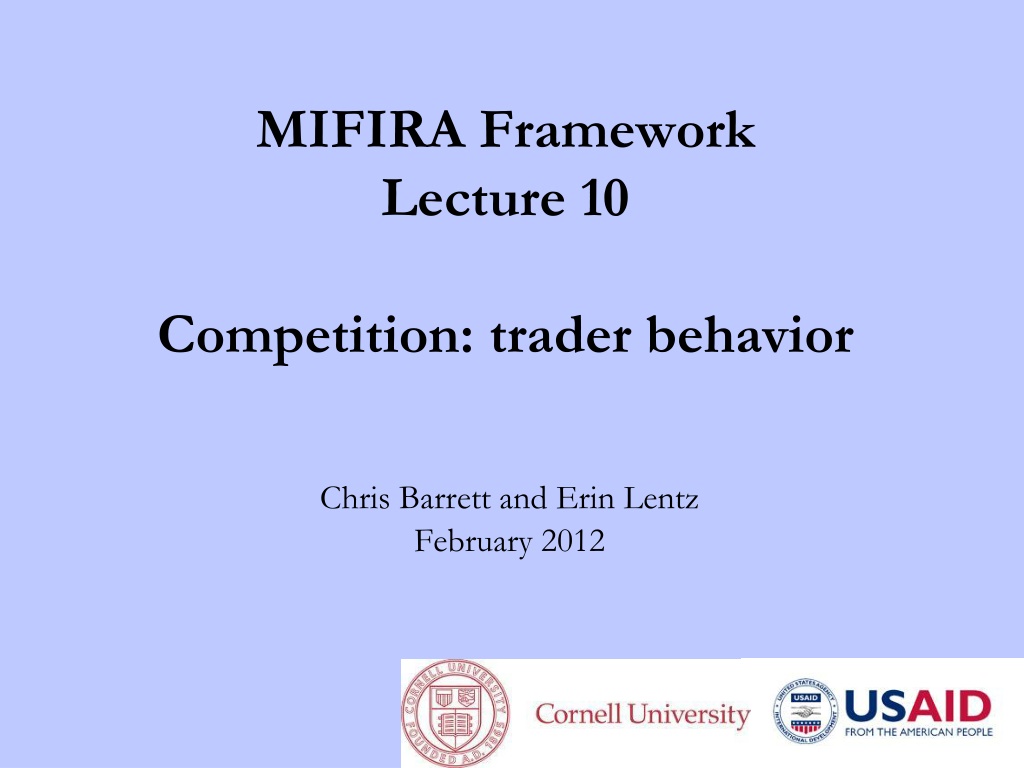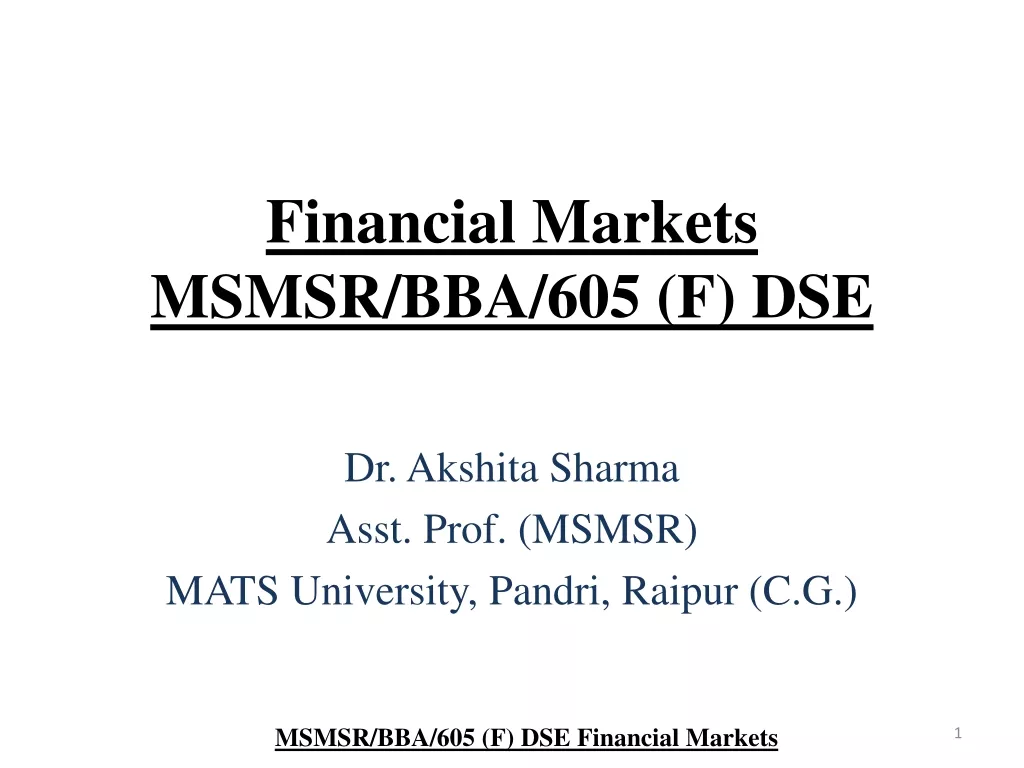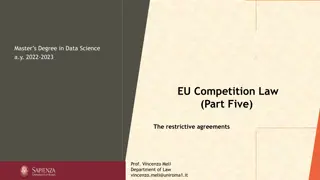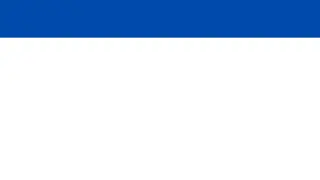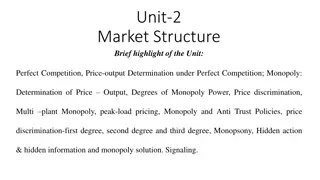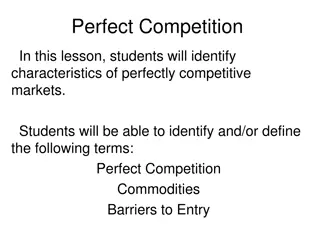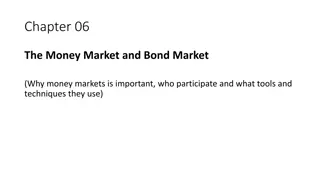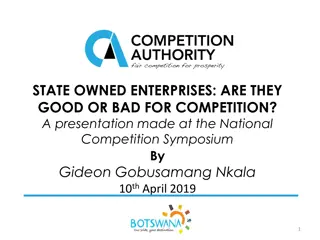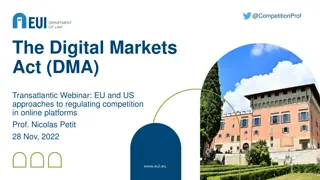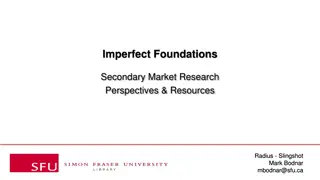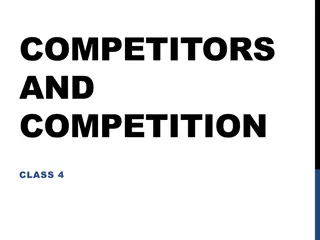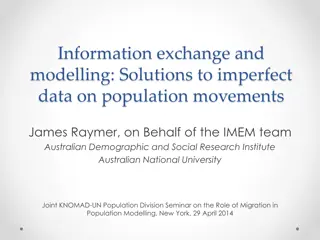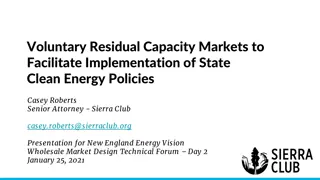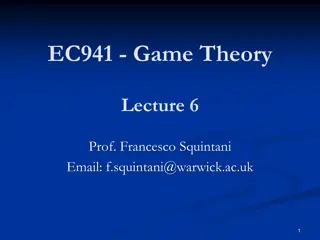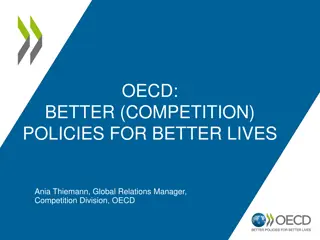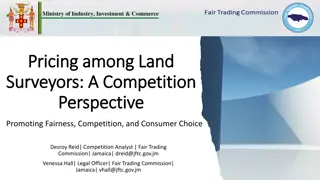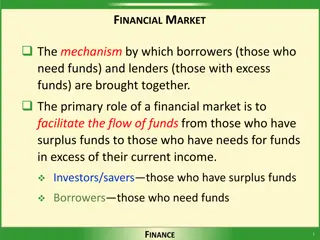Imperfect Competition in Markets
Explore the dynamics of imperfect competition in markets focusing on the behavior of traders, market power, pricing strategies, barriers to entry, and market structure analysis. Learn how firms with market power influence prices, the impact of agency purchases on food prices, and the factors contributing to market power such as entry and mobility barriers. Dive into the examination of market structure, firm conduct, and economic performance in the context of imperfect competition.
Download Presentation

Please find below an Image/Link to download the presentation.
The content on the website is provided AS IS for your information and personal use only. It may not be sold, licensed, or shared on other websites without obtaining consent from the author.If you encounter any issues during the download, it is possible that the publisher has removed the file from their server.
You are allowed to download the files provided on this website for personal or commercial use, subject to the condition that they are used lawfully. All files are the property of their respective owners.
The content on the website is provided AS IS for your information and personal use only. It may not be sold, licensed, or shared on other websites without obtaining consent from the author.
E N D
Presentation Transcript
MIFIRA Framework Lecture 10 Competition: trader behavior Chris Barrett and Erin Lentz February 2012
Linking Back To MIFIRA 1d. Do local traders behave competitively? If traders can exercise market power, they can extract added profits by boosting prices faster than costs increase. 2b. Will agency purchases drive up food prices excessively in source markets? Same logic as in question 1d, but with the demand side intervention being local or regional procurement. 2
The Basics of Imperfect Competition Firms with market power directly affect prices through sales quantity decisions. Because firms seek to maximize profits, choose quantity where MC=MR. But because it faces demand that is not perfectly price elastic, in order to expand output, must drop prices. Therefore MR<AR. Thus MC=MR<AR. This implies higher prices. The gap can be large for price inelastic demand food items in small, remote markets. 3
The Basics of Imperfect Competition: MC=MR<AR=p* Price Marginal costs p* Aggregate demand =Average revenue Marginal revenue q* Quantity 4
The Basics of Imperfect Competition Market power arises because of entry barriers (cannot start business) or mobility barriers (cannot expand business) that limit competition. 4 sources of barriers: Technical barriers (e.g., increasing returns and MES) Legal barriers (e.g., parastatals, licensing, IPRs) Informal barriers (e.g., sociocultural obstacles, road barriers, credit rationing) Firm-created barriers (e.g., sunk costs, overcapacity, predatory pricing, contract interlinkage, relationship- function-specific capital, etc.) 5
Structure, Conduct & Performance Dominant empirical method of analyzing markets: Market structure: Are there increasing returns to scale or scope? How many firms and size distribution? Entry and exit patterns? Firm conduct: How have firms responded to shocks in the past? Is there any sign of collusion among (especially larger) firms? Economic performance: What are profit and price effects of market structure and firm conduct? 6
Market Structure How many firms? As n increases, market becomes more competitive. How concentrated is the market? CRm= s1+ s2+ s3+ ... ... + sm workhorse is CR4 aggreg. share of top 4 firms CR4>90 effective oligopoly 40 CR4 90 possible imperfect competition CR4<90 workably competitive 7
Market Structure CRmignores firm size distribution. Alternative: Herfindahl-Hirschman Index (HHI) HHI = s12+ s22+ s32+ ... ... + sn2 HHI>2000 (<1000) oligopoly (competitive) Consider 2 different markets: 1) Mkt shares: 45,5,5,5 and 20 firms w/2% each 2) Mkt shares: 15,15,15,15 + 20 firms w/2% each CR4= 60 for both but HHI = 2180 vs. 980 8
Market Structure If concentration measures suggest oligopoly, why? What barriers to entry/mobility exist? - Are there increasing returns to scale or scope? What is [Mkt size/Minimum efficient scale] ? - If these technical barriers do not explain restricted competition, consider alternative sources of entry or mobility barriers (4 categories earlier). 9
Firm Conduct The last time there was a demand shock, what did the largest traders do? Did they increase throughput volumes? If not, why not? Did last shock induce trader entry? What was their pricing like, competitive or follower? Collusive behavior? How socially similar are traders? Gauge trader diversity to get a sense of how likely it is they can collude on pricing. 10
Economic Performance What are prices and profits like? - Profit level not always a good indicator because of X-inefficiency. Empirical IO studies find a much stronger positive relationship of concentration measures to prices than profits. Common result is higher prices for consumers and faster mark-up (slower mark-down) in the face of demand expansion (contraction) 11
Data Requirements Same as last lecture: - Key informant interviews and trader surveys. - Can be difficult to get precise quantitative data. Need to try to triangulate to verify estimates. 12
Interpreting the Analytic Punch line: Markets with a greater number and variety of traders and with lower concentration (CR4 or HHI) measures are less likely to be collusive, because it is harder for larger and disparate groups to organize. Analyze by product, function and geographic market. 13
Limitations of the Analytic Treat data w/healthy skepticism. Price change implications for expected price changes are not immediately clear. But when markets noncompetitive, rate of price increases is typically 50-100% higher than under perfect competition due to oligopolistic mark-ups. 14
